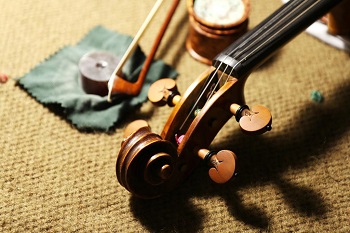Violin Bow and Rosin
Posted on January 23, 2019

Violins are complex instruments. Not only do you need to be concerned about the instrument itself, but you have the second component to take into consideration: the bow.
I learned a number of things about the bow very quickly:
- Bow quality effects sound quality
- Tighten the bow to play
- Loosen the bow when not playing
- Don’t touch the hair with your fingers
- You must apply rosin to the bow for it to make sound on the strings
- Bow hold to a newcomer is a freak of nature
Like many topics in the past, I had my introduction to these facts through the video series I was watching:
I’d honestly never heard of rosin before — it’s a solid cake of resin that comes from pines and other plants. You have to balance putting on just enough and not too much and reapply from time to time.
As a Christmas gift, Syn got me a Fiddlerman bow from my Amazon wish list (which cost more than double the violin itself did). I’m quite glad she did. Even though I’m an absolute noob to the instrument, when my new bow arrived, I could instantly tell it was much of higher quality than the bow that came with my fiddle.
The rosin that came with the kit had cracked during shipment, and I took it as a sign that it probably was also not the highest quality out there. I decided to purchase some Kaplan rosin to replace it, and chose to wait until the better rosin arrived before I put anything on my new bow.
There’s lots of rosin out there, and apparently, the quality of the rosin can effect your sound. I can’t really attest to the rosin I bought because I’m still doing a lot more plinking than bowing at this point. But every day, for a bit of time, I’m resolved to practice the dreaded bow hold.
More on that next time!